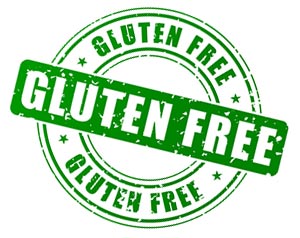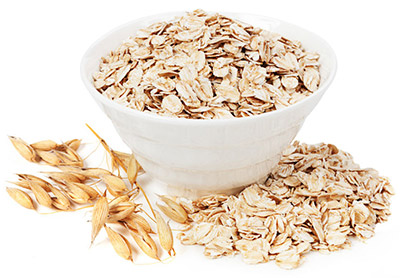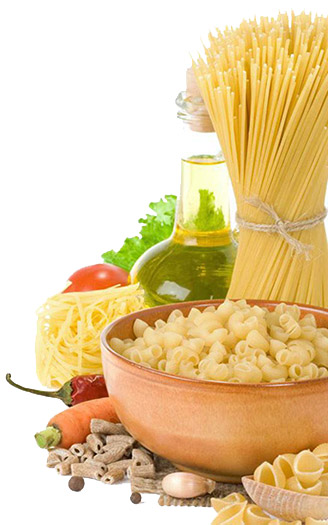 What is gluten? What is celiac disease? And what can and can’t you eat now that you’re on a gluten-free diet? This is your one-stop reference sheet for all things gluten-free!
What is gluten? What is celiac disease? And what can and can’t you eat now that you’re on a gluten-free diet? This is your one-stop reference sheet for all things gluten-free!
Gluten
A protein found in wheat, barley, and rye. Gluten can often be found in oats because of processing. It’s responsible for the stretchiness and texture of mainstream baked goods.
Gluten-free
In the U.S. and Canada, “gluten-free” is defined as less than 20 parts per million (ppm) of gluten.
Autoimmune
In an autoimmune disease, the body recognizes its own tissue as an invader and attacks. Celiac is an autoimmune disease. Others include type 1 diabetes, multiple sclerosis (MS), lupus, rheumatoid arthritis (RA), psoriasis, and many more.
Celiac disease
An autoimmune disease where the body attacks the small intestine and/or other areas every time gluten is eaten. Once it starts, it’s lifelong, and the only effective treatment is a lifelong, strict gluten-free diet.
Gluten sensitivity (aka gluten intolerance or non-celiac gluten sensitivity)
You don’t have celiac disease, but you still experience negative symptoms when you eat gluten. We’re not quite sure yet how it works but studies have confirmed that it does exist and may affect 5 to 10 percent of the population.
Cross contamination or cross contact
There are many foods that don’t have gluten as an ingredient but still end up containing gluten because of the way they are processed and handled during preparation or at home.

Safe Foods:
- Baking Soda
- Beans & Lentils – check labels on mixed or baked beans
- Chocolate – check labels for add-ins
- Coffee – check labels if flavored
- Condiments – mayonnaise, ketchup, most mustard (check labels), pickles, olives, hot sauce, salad dressings (check labels), Lea and Perrin’s Worcestershire sauce (in the U.S.), salsa, Wright’s Liquid Smoke
- Cream of Tartar
- Dairy – check labels on unsalted, whipped, and light varieties of butter; check labels on flavored varieties of yogurt
- Eggs
- Extracts – only if specified as “pure” (such as pure vanilla extract)
- Fish & Seafood – all safe as long as not marinated or breaded
- Fruit – fresh, frozen, canned, pure juices
- Gums – acacia, carrageenan, carob bean, cellulose, guar, locust bean, xanthan
- Lactose
- Lecithin
- Meat & Poultry – all fresh varieties safe as long as not marinated, injected, or breaded (check labels on deli meats and whole turkeys)
- Oils, Margarines & Shortenings
- Pectin
- Rice – all varieties safe unless mixed with flavorings or cross contaminated
- Seeds & Seed Butters – check labels of canned and bottled seeds for flour or coatings
- Spices – check labels of mixed spices
- Tea – check labels if flavored
- Vegetables – fresh, frozen, or canned
- Vinegars – malt vinegar is not safe
- Yeast
Gluten-Free Grains, Flours & Starches:
- Amaranth
- Arrowroot
- Bean Flours
- Buckwheat
- Cassava
- Chestnut
- Chickpea
- Corn
- Glutinous Rice
- Millet
- Montina
- Oats (only if certified)
- Pea
- Potato
- Quinoa
- Rice
- Sorghum
- Soy
- Sweet Rice
- Tapioca
- Taro
- Teff
- Yuca
May or May Not Contain Gluten:
- Artificial Extracts – almond, vanilla, etc.
- Asian Sauces – many contain wheat; make sure soy sauces, tamari, and Asian sauces are labeled “gluten-free”
- Bacon
- Baking Powder
- Barbecue Sauces & Marinades
- Bouillon Cubes
- Brown Rice Syrup
- Caramel Color
- Dextrin
- Fillers
- Flavorings – natural and artificial
- Gravies
- Hydrolyzed or Texturized Plant or Vegetable Protein
- Imitation Bacon
- Imitation Crab, Seafood, or “Krab”
- Licorice
- Meat Substitutes – many contain wheat; look for Seitan or wheat on the label
- Miso – may contain wheat
- Modified Food Starch
- Mono- and Diglycerides
- MSG – gluten-free if from U.S., questionable if not
- Multi-Grain Products – breads, crackers, etc.
- Mustard/Mustard Powder – may contain beer or wheat
- Nuts/Nut Flours – may be cross-contaminated, check labels
- Prepared Broths
- Prepared Meats – check to see if breaded, floured, injected, or marinated
- Prepared Soups/Stews
- Processed Meats – deli and luncheon meats, turkey injected with liquid
- Sausages
- Seasonings – blended spices and seasoning packets may contain wheat
- Vegetable Gums
Common Foods that Contain Gluten:
- Baked Goods – biscuits, cakes, cookies, pastries, pies
- Beer – unless certified gluten-free
- Breads – buns, flour tortillas, pita, pizza crust, potato, pumpernickel, rye, sourdough
- Breakfast Foods – bagels, breakfast bars, cereals, pancakes
- Crackers – butter, cheese, graham, melba toast, rye, saltines
- Pasta – all shapes, orzo, rice mixes with pasta
- Miscellaneous – breadcrumbs, croutons, communion wafers, panko crumbs

Unsafe Foods:
- Barley
- Bleached Flour
- Bolted Flour
- Bran
- Bread Flour
- Bromated Flour
- Bulgar/Bulgar Wheat
- Cake Flour
- Chapati Flour
- Couscous
- Durum
- Einkorn
- Emmer
- Enriched Flour
- Farina
- Farro
- Gluten Flour Graham
- Hordeum Vulgare
- Hydrolyzed Wheat
- Instant Flour
- Kamut
- Malt/Malt Vinegar
- Matzo
- Organic Flour
- Pastry Flour
- Rye
- Seitan
- Self-rising Flour
- Spelt
- Semolina
- Tabbouleh
- Triticale
- Udon
- Vital Wheat Gluten
- Wheat
- Wheat Berry
- Wheat Bran
- Wheat Flour – all-purpose, whole grain, etc.
- Wheat Germ
- Wheat Oil
- Wheat Protein
- Wheat Starch
- White Flour

When in doubt, check labels. Gluten Free & More, Inc. does not guarantee accuracy about what foods are safe or unsafe for an individual’s diet. Please consult your medical professional for your correct diet.

